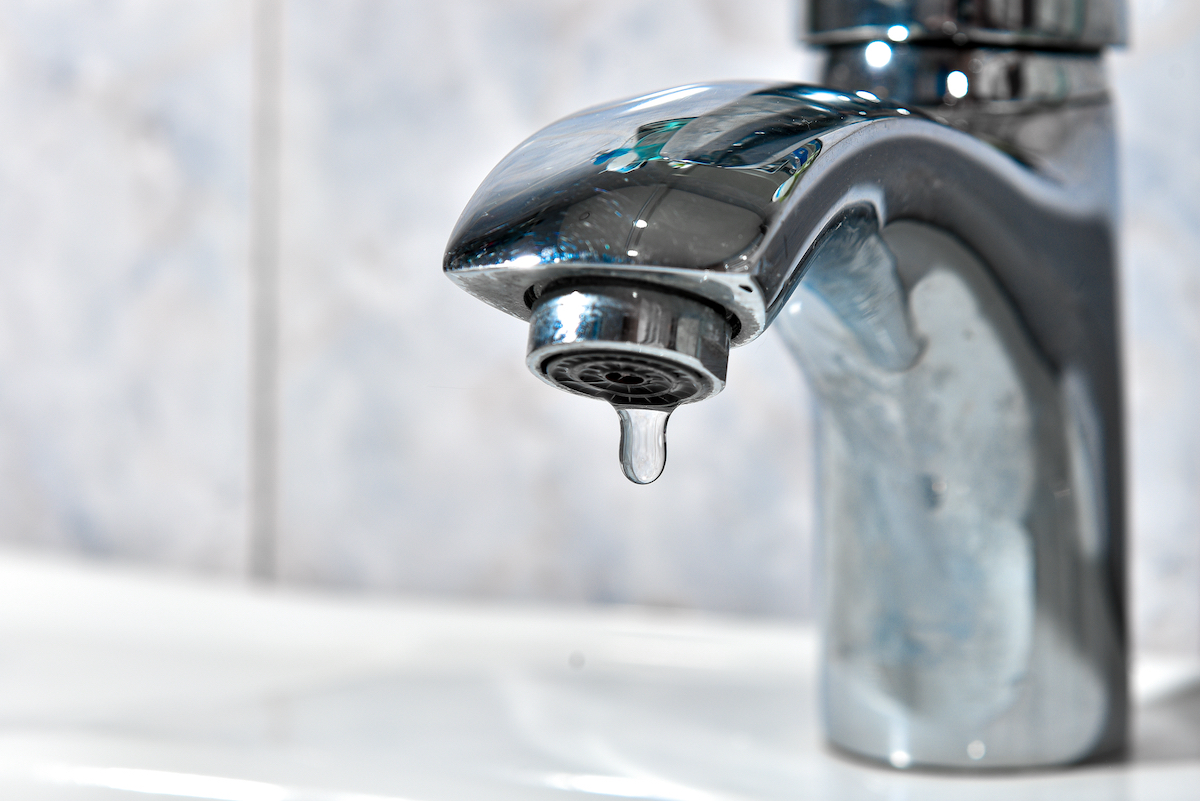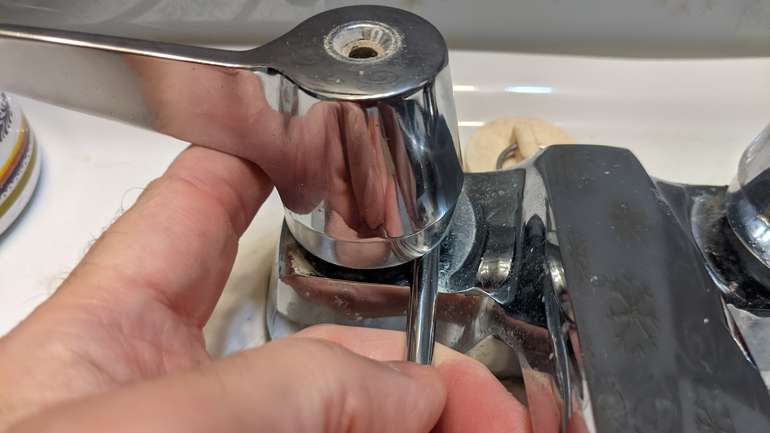Why It's Crucial to Rectify a Malfunctioning Faucet
Why It's Crucial to Rectify a Malfunctioning Faucet
Blog Article
This article on the next paragraphs about Should I Repair or Replace a Leaky Faucet? is rather intriguing. Read on and make your own personal assumptions.

Trickling faucets may feel like a minor trouble, however their effect exceeds just the annoyance of the audio. From drainage to sustaining unnecessary financial prices and wellness dangers, ignoring a trickling tap can result in various effects. In this short article, we'll delve into why it's important to address this typical home concern quickly and effectively.
Waste of Water
Ecological Effect
Trickling faucets add considerably to water wastefulness. According to the Environmental Protection Agency (EPA), a solitary tap leaking at one drip per secondly can waste more than 3,000 gallons of water per year. This not only pressures water sources but likewise affects communities and wild animals based on them.
Financial Costs
Raised Water Expenses
Past the environmental effect, trickling taps can blow up water expenses substantially. The built up wastefulness in time converts into higher utility expenditures, which can have been prevented with prompt repairs.
Potential Property Damage
Additionally, long term trickling can result in damage to fixtures and surface areas bordering the tap. Water build-up can trigger discoloration, rust, and even architectural problems if left unattended, resulting in extra repair service costs.
Health Issues
Mold And Mildew and Mold Development
The consistent visibility of wetness from a trickling faucet produces an ideal atmosphere for mold and mildew and mold development. These fungi not just endanger indoor air quality however additionally posture health dangers, particularly for individuals with breathing problems or allergies.
Waterborne Diseases
Stationary water in trickling taps can come to be a breeding place for microorganisms and various other virus, raising the threat of waterborne conditions. Pollutants such as Legionella germs thrive in stagnant water, possibly causing major illnesses when consumed or breathed in.
DIY vs. Expert Repair work
Advantages and disadvantages of DIY Repair Service
While some may try to repair a trickling faucet themselves, do it yourself repair work feature their very own collection of challenges. Without proper understanding and tools, DIY efforts can exacerbate the issue or cause insufficient repair services, prolonging the trouble.
Benefits of Employing a Specialist Plumber
Hiring a professional plumber guarantees that the underlying cause of the dripping tap is dealt with efficiently. Plumbing professionals possess the knowledge and devices to identify and repair faucet problems effectively, saving time and minimizing the threat of further damages.
Step-by-Step Guide to Taking Care Of a Dripping Tap
Devices Needed
Before trying to deal with a dripping faucet, gather the essential tools, including a flexible wrench, screwdrivers, substitute components (such as washers or cartridges), and plumber's tape.
Common Faucet Issues and Their Solutions
Identify the type of faucet and the specific issue causing the drip. Common troubles consist of worn-out washers, rusty valve seats, or damaged O-rings. Describe manufacturer directions or on the internet tutorials for step-by-step support on repair work.
Safety nets
Regular Upkeep Tips
To avoid dripping taps, perform routine upkeep such as cleansing aerators, examining for leakages, and changing worn-out components without delay. Furthermore, consider setting up water-saving gadgets or upgrading to much more reliable fixtures.
Relevance of Prompt Services
Resolving leaking taps as soon as they're discovered prevents further water wastage and possible damage, ultimately saving both water and money over time.
Influence On Property Value
Understanding of Well-Maintained Building
Keeping a building in good condition, consisting of addressing maintenance problems like dripping faucets, improves its viewed worth and value amongst prospective purchasers or occupants.
Influence on Resale Value
Characteristics with well-maintained plumbing components, including faucets, command greater resale values in the realty market. Resolving leaking faucets can add to a favorable impact during property examinations and negotiations.
Environmental Duty
Private Contribution to Conservation
Taking duty for dealing with leaking faucets aligns with more comprehensive efforts towards water conservation and environmental sustainability. Every person's activities collectively make a substantial influence on preserving precious resources.
Sustainable Living Practices
By prioritizing prompt repair work and embracing water-saving routines, individuals contribute to sustainable living practices that profit both present and future generations.
Conclusion
Dealing with a dripping tap surpasses plain comfort; it's a vital step toward preserving water, minimizing monetary costs, and guarding health and wellness and residential or commercial property. Whether via do it yourself repairs or specialist support, taking action to deal with leaking taps is a small yet impactful means to promote liable stewardship of resources and add to a much healthier, extra lasting future.
Most Common Reasons for a Leaky Faucet and How to Stop the Drip
Whether it’s your kitchen faucet leaking or a bathroom faucet leaking, one leaky faucet can waste anywhere from three to 30 gallons of water every single day. If the constant drip-drip-drip doesn’t get your attention, your water bill will. The good news is that, by following a few simple steps, chances are pretty good you can fix the problem yourself.
Why is it dripping?
Before you start taking things apart, let’s break down some of the most common causes of a leaky faucet.
Bad O-ring.
A cartridge is a valve that controls the flow of water into the faucet spout. On cartridge faucets there’s an O-ring—the little disc attached to the stem screw that holds the faucet handle in place. If it’s loose or worn-out, it can cause your sink handle to leak. Of course, the cartridge itself could be worn out. If that’s the case, make sure you replace it with the exact same kind.
Corroded valve seat.
The valve seat connects the faucet and the spout. If the leak seems to be coming from the spout, it might be because a buildup of water sediment has corroded the valve seat.
Worn-out washers or seals.
A leaky spout could be caused by a bad washer that rests against the valve seat. It’s just a matter of time before friction takes its toll. It could also be the wrong size washer or one that’s been installed incorrectly. Water sediments can also corrode inlet and outlet seals.
Water pressure.
If the faucet only drips now and then, or when you turn the handles a certain way, you should probably check your home’s water pressure.
Loose or broken parts.
The adjusting ring and packing nuts in the stream screw can become loose over time, causing your sink handle to leak. Try tightening or replacing the packing nut. If the leak is coming from the pipes underneath the sink, you probably have a broken pipe or fitting. If that’s the case, you should definitely call a plumber.
Know your faucet.
Faucets come in a variety of types. Each one has its own assembly—and its own possible causes of leaks. Learning about the four most common kinds of faucets will help you know how to take them apart and make any repairs.
How to stop a leaky faucet
Fixing that leaky faucet doesn’t have to take a lot of time, money, or expertise. It’s usually a simple matter of replacing a worn-out washer or gasket, a loose O ring, or another part. Chances are really good you can do this yourself if you follow these simple steps.
Shut off the water.
Before you tackle the faucet, cut off the water supply to the sink. There should be one valve for hot and one for cold. Hand-turn them clockwise with your hands till they close. If there are no valves under the sink, head to the basement and shut off the main water supply to the house. Then turn on the faucet until it empties out the water that’s still in the line and you’re ready to start. It’s a good idea to cover the sink drain with a plug or a rag so you don’t lose any small pieces and parts while you’re working.

As a fervent reader on How to Fix a Dripping or Leaky Faucet , I think sharing that piece of content was beneficial. Sharing is nice. Helping others is fun. Kudos for being here. Please come by our website back soon.
Report this page